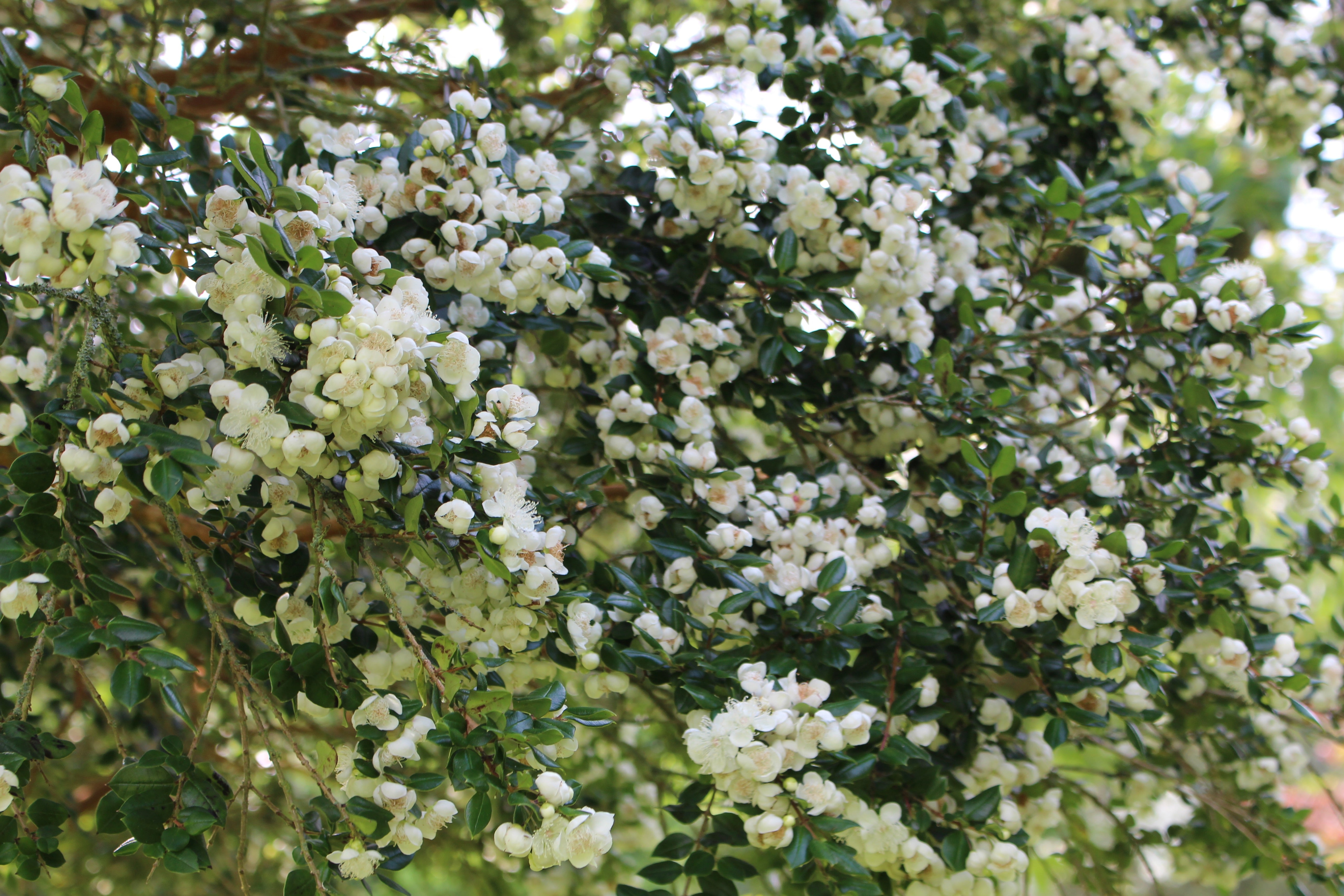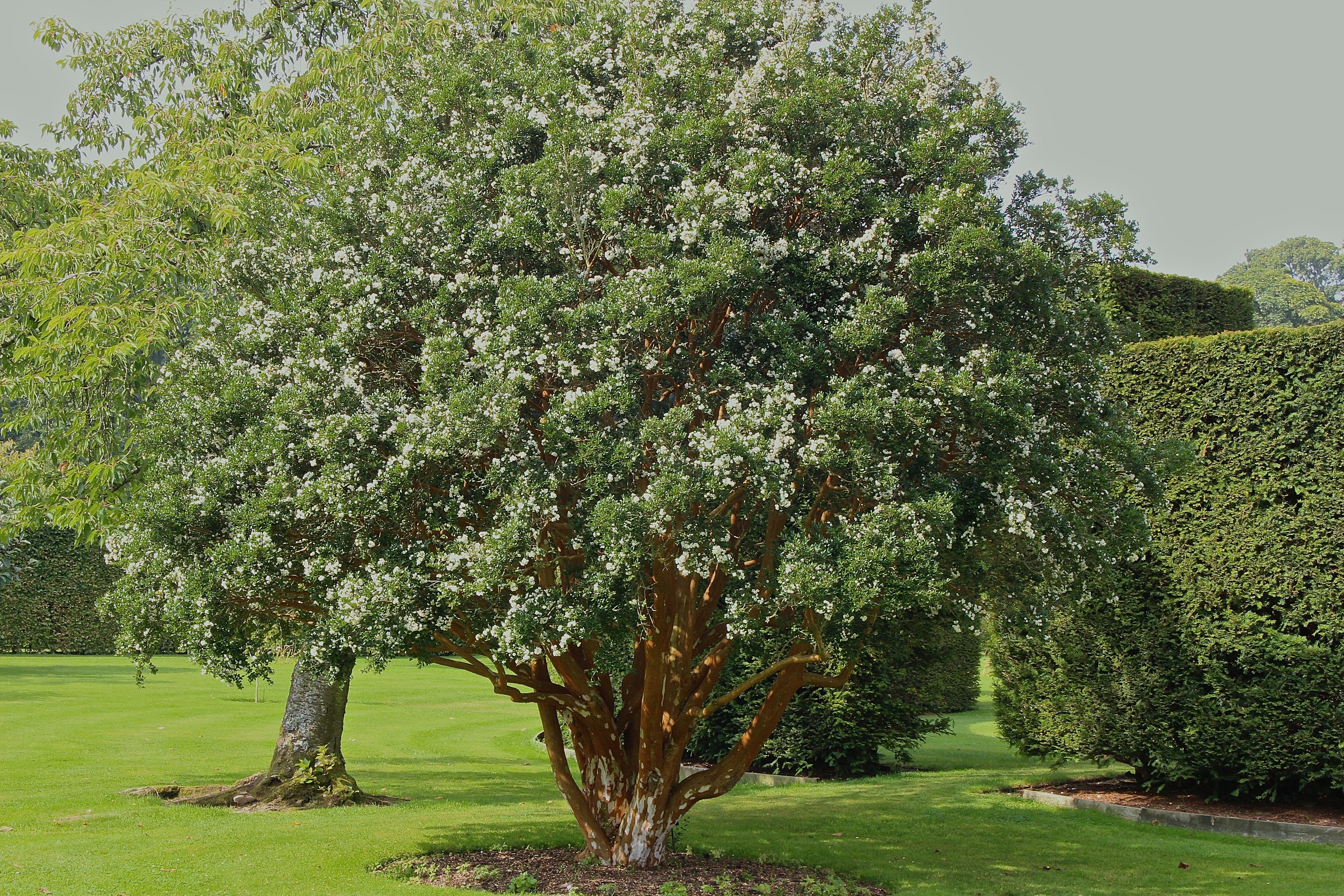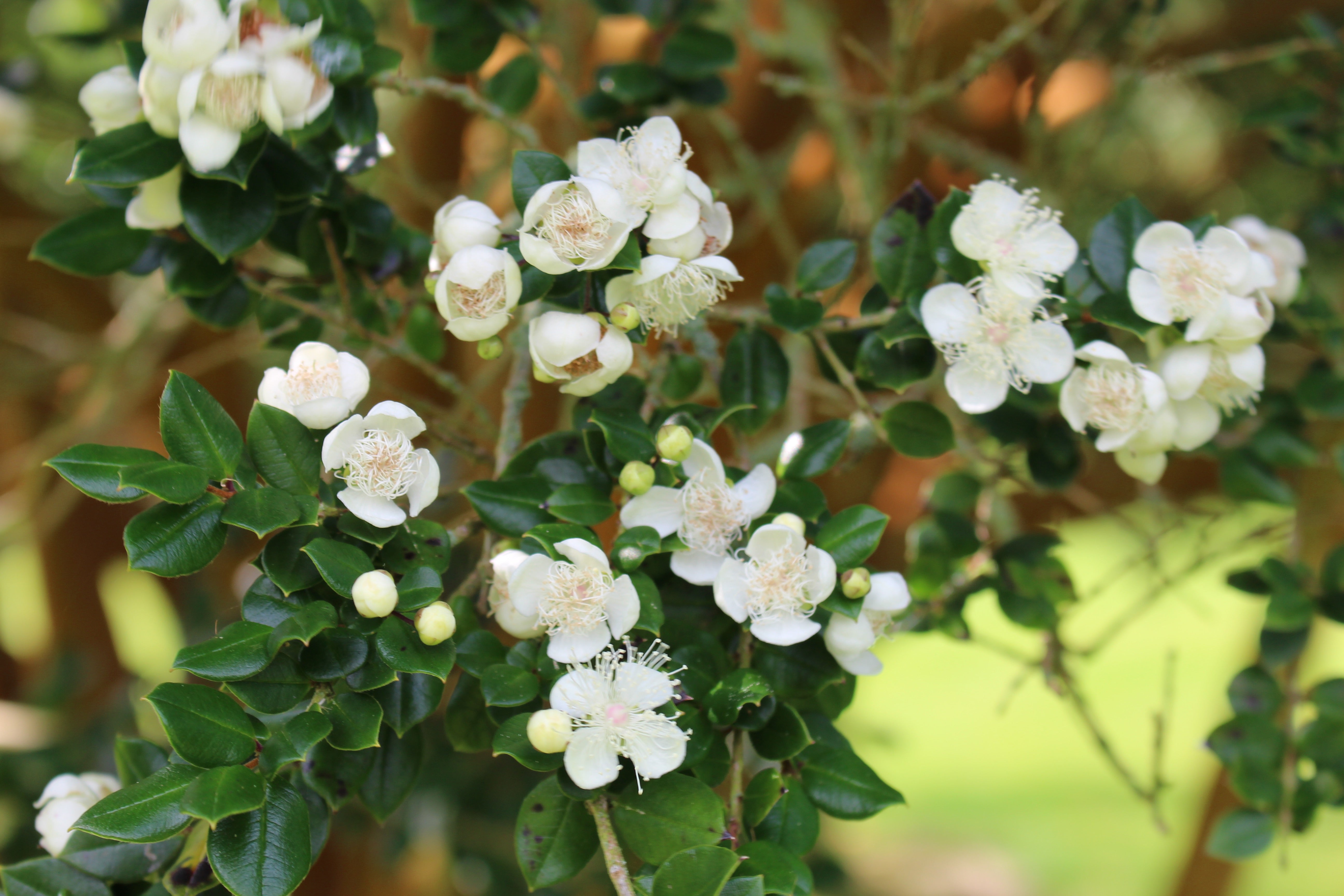Luma apiculata
Approx. 0.5 litre pot
About this cultivar:
Luma apiculata is a species of flowering plant in the myrtle family, native to the central Andes between Chile and Argentina, hence the common name is Chilean myrtle.
It has many names! Synonyms include Eugenia apiculata, Myrceugenia apiculate, and most popularly Myrtus luma.
Slow growing the wonderful smooth bark, coloured grey to bright orange-brown, peels as the tree grows. It is evergreen, with small, fragrant, oval leaves and profuse white flowers in early to midsummer. Its fruit is an edible berry ripe in early autumn – but the birds usually get there first!
Trees in some protected areas are up to 650 years old. Amazingly there is a Argentinian myrtle forest that covers 20 ha of the Quetrihué Peninsula, where the cinnamon-coloured myrtles leave almost no space for other trees! Imagine that, centuries in the making…
We love it and so does the RHS – they gave it the Royal Horticultural Society's Award of Garden Merit!
- Position: Full sun, partial shade
- Soil: Almost any soil, grows well in Ballyrobert
- Flowers: July, August, September
- Other features: Royal Horticultural Society Award of Garden Merit (RHS AGM)
- Hardiness: Fully hardy, grows well in Ballyrobert, H4 - Hardy through most of the UK (-10 to -5°C)
- Habit: Bushy
- Foliage: Evergreen
- Height: 30 - 1200 cm (1 - 40 ft)
- Spread: 30 - 800 cm (1 - 25 ft)
- Time to full growth: 20 to 50 years
- Plant type: Herbaceous Perennial, shrub, tree
- Colour: Green, white
- Goes well with: --
About this genus:
Luma is a genus of flowering plants in the myrtle family Myrtaceae, described as a genus in 1853. The genus name derives from the Mapuche (Native American) name for a related species, Amomyrtus luma. As far as I know there are only two species – apiculata and chequen. It is native to the Valdivian temperate rain forests of Chile and Argentina.
They are shrubs or small trees with evergreen foliage and smooth red or orange bark, typically reaching 10–20 m (33–66 ft) tall and up to 1 m (3 ft) in trunk diameter. The leaves are glossy dark green, with a spicy scent if crushed. The flowers have four white petals and numerous stamens; the fruit is a small purple or black berry. Its edible fruit is appreciated in Chile and Argentina and its flowers are important for honey production.
The thing is though – they are so slow growing that for all intents and purposes they are shrubs. They are so slow growing some trees in protected areas in Argentina are up to 650 years old. They are so slow growing it is often kept as bonsai! They re so slow growing....you get the picture! In the garden they are used for the contrast of the glossy foliage and slender red stems. Outside the garden Luma apiculata has become naturalised in parts of Ireland and western Great Britain – so yes, they will grow almost anywhere! (that isn’t a bog, woodland, or desert).






